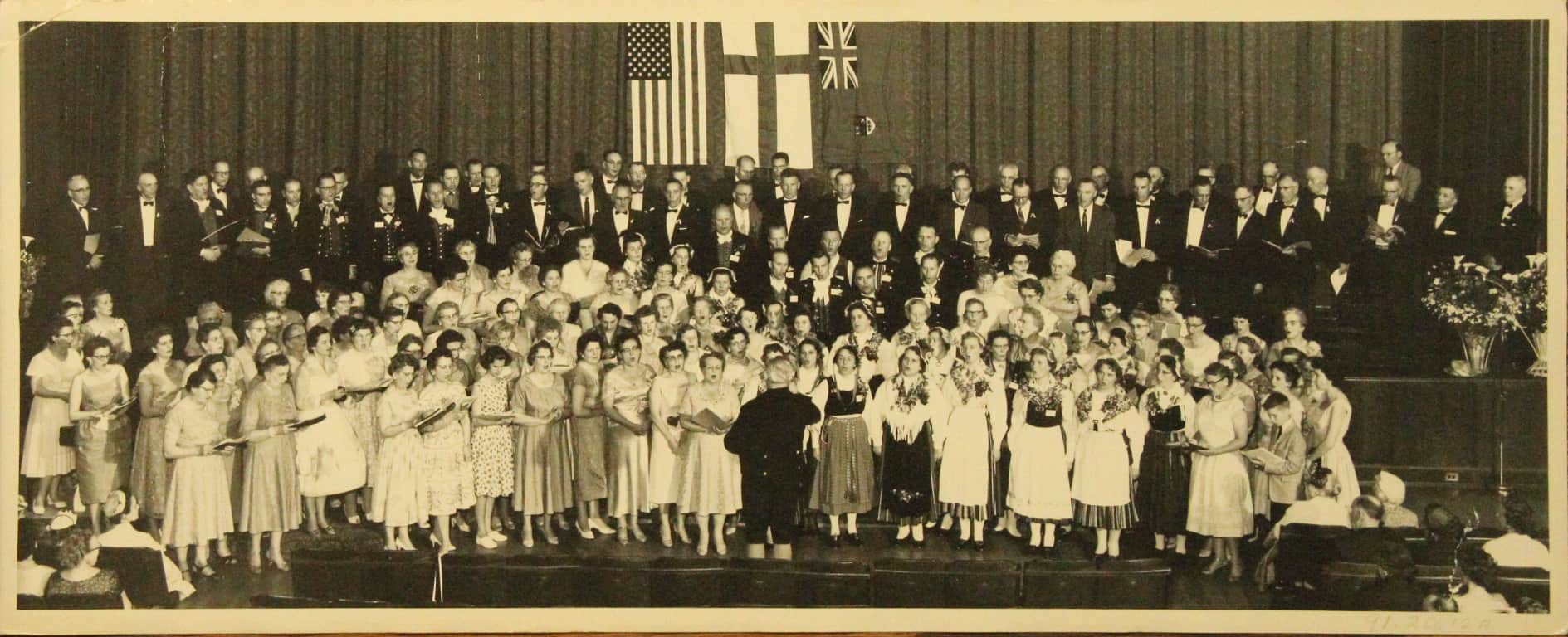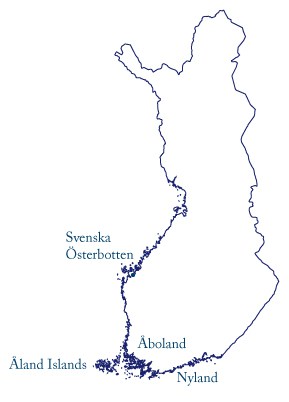
FAMILY HISTORY LINKS
Where can I learn more about my Swedish Finn heritage?
Articles on culture, history, and more.
Works by June Pelo.
Read about life in a logging camp.
Every issue of our journal The Quarterly.
Swedish Finn American newspaper
The Leading Star.
Book Immigrants of the Independence Valley.
How can I find my Swedish Finn ancestor?
Documenting Every Emigrant database
The best resources for family research
Parish Primer
How to read a communion record
Submit a request for research assistance
How can I preserve my family’s history so it will be available when my children or grandchildren are interested?
Submit your ancestor(s) to our database
Donate a copy of your family history to SFHS
Volunteer to keep SFHS a strong organization
Donate to support our preservation efforts
The four Swedish speaking areas of Finland—Ostrobothnia, Åboland, Åland Islands, and Nyland.

The Rarity of Being a Swedish Finn
Between 1860 and 1920 the United States granted permanent residency to *32,611,538 people. We’ve compared the number of emigrants from a sampling of nationalities.
Germany: 4,399,339 or 13.5% of all immigrants
United Kingdom: 3,434,010 or 10.5%
Italy: 3,227,344 or 9.9%
Ireland: 2,644, 293 or 8.1%
Sweden: 1,210,379 or 3.7%
Norway: 718,990 or 2.2%
France: 374,560 or 1.1%
Turkey: 359,665 or 1.1%
China: 339,680 or 1%
Japan: 274,806 or .8%
Swedish speaking Finland: 70,000 or .0025%
*Statistics taken from 2008 Yearbook of Immigration Statistics, Office of Immigration Statistics, US Department of Homeland Security.

FAQ
What is a Swedish Finn?
Finland is a multilingual country. Finnish and Swedish are official languages and several additional languages, such as Inari, Northern, and Skolt Samí, hold special status. These languages have been spoken in Finland for centuries. Finland was part of Sweden for more than 600 years—all government and military business was conducted in Swedish—until Finland was lost to Russia in 1809.
It was widely believed that the two cultures, Finnish speaking and Swedish speaking, developed separately and peacefully with Swedish speakers living on the coast and Finnish speakers living inland. However, recent archeological evidence suggests that Swedish-speakers moved to coastal areas of Finland, likely beginning around 13th century, and settled among the Finnish speakers. The Finnish speakers did not move away, abandoning the coast to the Swedes. Instead, archeological evidence suggests that the Swedish language was adopted in these coastal communities by the Finnish speakers.
Swedish Finns, or Finlandssvenskar as they refer to themselves, are part of a language minority with a distinct culture. Today in Finland they comprise 5.2% of its population and live in four areas—Ostrobothnia, Åboland, Åland, and Nyland. The Swedish spoken in Finland is mutually intelligible with the Swedish spoken in Sweden and has many distinct dialects with unique words and phrasing.
During the period of the Great Migration many Swedish Finns emigrated to new countries. Emigration was far heavier in Ostrobothnia and Åland than in Åboland and Nyland, which were more industrialized and had more employment opportunities. Some communities lost over ten percent of their population to emigration.
Why “Swedish Finns?”
People often challenge the phrasing of Swedish Finn. Here are the reasons we use this term:
The earliest Swedish Finn organizations used the the term Swedish Finnish such as Svensk-Finsk Nykterhetsförbundet av Amerika, the Swedish Finnish Baptist Mission, and Svensk-Finska Arbetareklubben i Seattle. Some Swedish Finn emigrants referred to themselves as Swedes but calling ourselves Swedes is inaccurate and leaves out the best part of the story. In Finland today, the Swedish speakers refer to themselves as Finlandssvenskar or Finland’s Swedes. This phrasing works well in Swedish but is awkward and clumsy in English. In the end we had to choose a name and we chose to follow the lead of our emigrant ancestors and use Swedish Finn. You can rest assured that we will never tell you what you should call yourself.
Where were the Swedish Finn settlements in North America?
British Columbia
New Westminster, Rossland, Vancouver
California
Bakersfield, Berkeley, Crescent City, Eureka, Fresno, Fort Bragg, Los Angeles, Reedley, San Francisco
Colorado
Leadville, Telluride
Connecticut
Branford, Bridgeport, New Haven
Florida
Fort Worth, West Palm Beach
Illinois
Chicago, Rockford, Waukegan
Massachusetts
Boston, Fitchburg, Gardener, North Chelmsford, Norwood, Quincy, Worcester
Michigan
Amassa, Baraga, Bessemer, Crystal Falls, Calumet, Detroit, Dollar Bay, Escanaba, Gladstone, Hancock, Iron Mountain, Felch, Ironwood, Manistique, Munising, Muskegon*, Negaunee, Norway, Otonagon, Ramsay, Sault Ste. Marie, Stambaugh
Minnesota
Biwabik, Chisholm, Duluth, Eveleth, Hibbing, Minneapolis, West Duluth
Montana
Butte
New Jersey
Jersey City, North Arlington
New York
Bronx, Brooklyn, Mariners Harbor, Springfield, Staten Island, Wappinger Falls
Ontario
Blind River, Hamilton, Sault Ste. Marie, Windsor
Oregon
Astoria, Coos Bay, Portland
Rhode Island
Woonsocket
Utah
Bingham Canyon, Eureka, Salt Lake City
Washington
Aberdeen, Anacortes, Everett, Hartford, Hoquiam, New Castle, Olympia, Port Angeles, Rochester, Seattle, South Bend, Tacoma
Wisconsin
Ashland, Conover, Kenosha, Superior